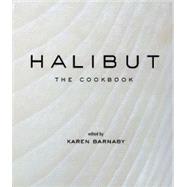
Karen Barnaby is the executive chef at The Fish House in Vancouver, British Columbia. A columnist for the Vancouver Sun, she is also the author of several cookbooks. She has won a Cuisine Canada award, two Gourmand Cookbook awards and the British Columbia Restaurant Hall of Fame "Back of the House" Award.
| Introduction | |
| Appetizers Gently Simmered | |
| Poached and Steamed Pan Roasting | |
| Sauteing and Frying | |
| In the Oven Grilled | |
| Simple Marinades and Sauces | |
| Index | |
| Table of Contents provided by Publisher. All Rights Reserved. |
The New copy of this book will include any supplemental materials advertised. Please check the title of the book to determine if it should include any access cards, study guides, lab manuals, CDs, etc.
The Used, Rental and eBook copies of this book are not guaranteed to include any supplemental materials. Typically, only the book itself is included. This is true even if the title states it includes any access cards, study guides, lab manuals, CDs, etc.